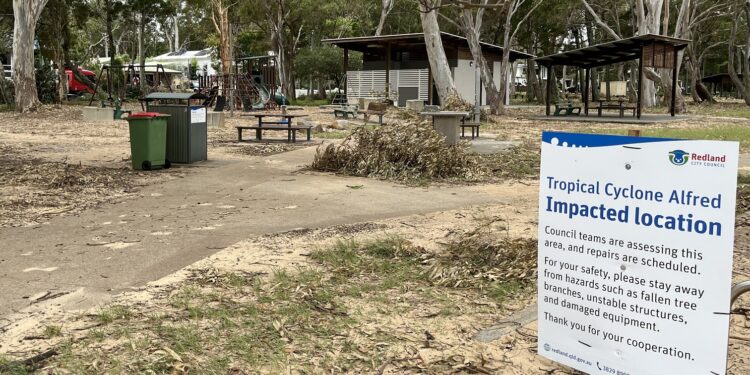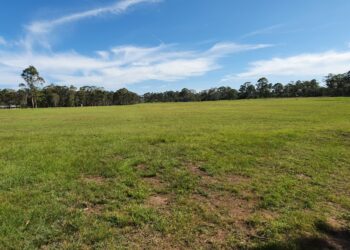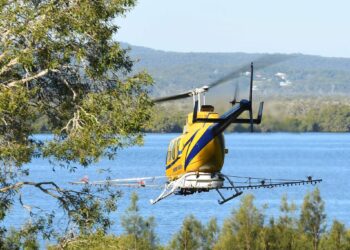Redland City Council has endorsed two action plans that will guide the ongoing recovery from Tropical Cyclone Alfred and ensure the Redlands Coast community is prepared for future severe weather events.
Mayor and Local Disaster Management Group Chair Jos Mitchell said the plans, endorsed at this month’s General Meeting of Council, included medium and long-term recovery goals to support the environment, community, economy, city infrastructure and waste, and roads and transport.
“The Local Recovery Group (LRG) has now been ‘stood down’ and both plans will be delivered utilising existing resources across Council and other agencies as part of the transition back to business as usual,” the Mayor said.
“The plans include objectives to help us build back stronger, strengthen our Community Champions and city-wide SES networks, and ensure residents are prepared for future weather events. Advocacy for Queensland Government investment in our future disaster management needs is already underway.
“The objectives will be monitored by the LRG, with reports provided to the Redland City Local Disaster Management Group (LDMG) and Queensland Reconstruction Authority at key milestones.”
Across the four-month recovery period so far, the LRG has conducted more than 3000 safety checks on Council assets, collected in excess of 40 tonnes of food and odorous waste, supported 4600-plus residents at local Community Recovery Hubs, and connected with 500 impacted businesses.
“These outcomes have been a collective effort, with the LRG supported by other levels of government, key stakeholders across various sectors, community groups, and of course the city’s Council teams,” the Mayor said.
“The Redland Tropical Cyclone Alfred Local Recovery Plan and Event-Specific Recovery Action Plan: Tropical Cyclone Alfred were endorsed at last week’s General Meeting and will be published on Council’s Disaster Dashboard for the community to view.

“As well as outlining the next steps in the recovery process, both reports provide details on the recovery tasks completed so far and reiterate that Council is committed to working side-by-side with the community and other agencies going forward.
“Council knows there is still a backlog of downed trees and large root balls in Council conservation reserves and park spaces, with operational teams working to address these as quickly as possible as part of their business-as-usual operations.”
Deputy Mayor and Local Recovery Group Chair Julie Talty said Council had also developed an advocacy plan aimed at strengthening the city’s disaster capabilities and improving resilience for future severe weather events.
“Longer-term goals include securing investment in telecommunications resilience and upgrades to places of refuge and evacuation centres, as well as funding for a purpose-built cyclone-rated disaster coordination centre, flood warning infrastructure and rainfall creek gauge networks,” Cr Talty said.
“We are also advocating for investment in resilient sport and recreation asset upgrades and continued support for our residents throughout the remainder of the recovery phase.
“Fit-for-purpose infrastructure improvements will help to mitigate the impacts of future severe weather events, such as the prolonged power outages experienced during the cyclone, while also supporting efficient recovery processes.”

Cr Talty said there were several organisations, groups and individuals that deserved credit for helping Redlands Coast bounce back from the cyclone.
“Some highlights include Turbans 4 Australia providing more than 1700 warm meals to residents in need on the islands, and GIVIT facilitating the donation of more than 400 essential items to Redlands Coast residents in response to requests for assistance,” Cr Talty said.
“Queensland and Australian government support has also been crucial, with more than $13.2 million in Personal Hardship Assistance Scheme (PHAS) grants approved for Redland residents throughout the recovery period.
“We value the partnerships forged with other agencies and the community during the cyclone, and as part of the recovery plans endorsed by Council, will aim to build on these going forward so we can strengthen our response to future disaster events.”









